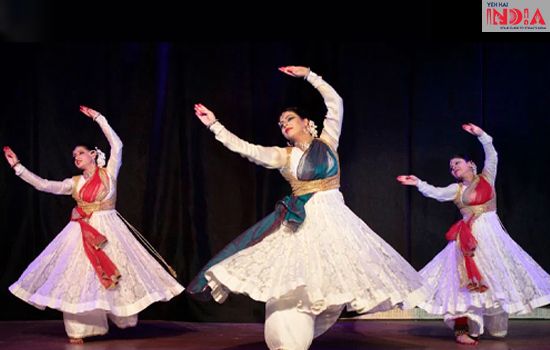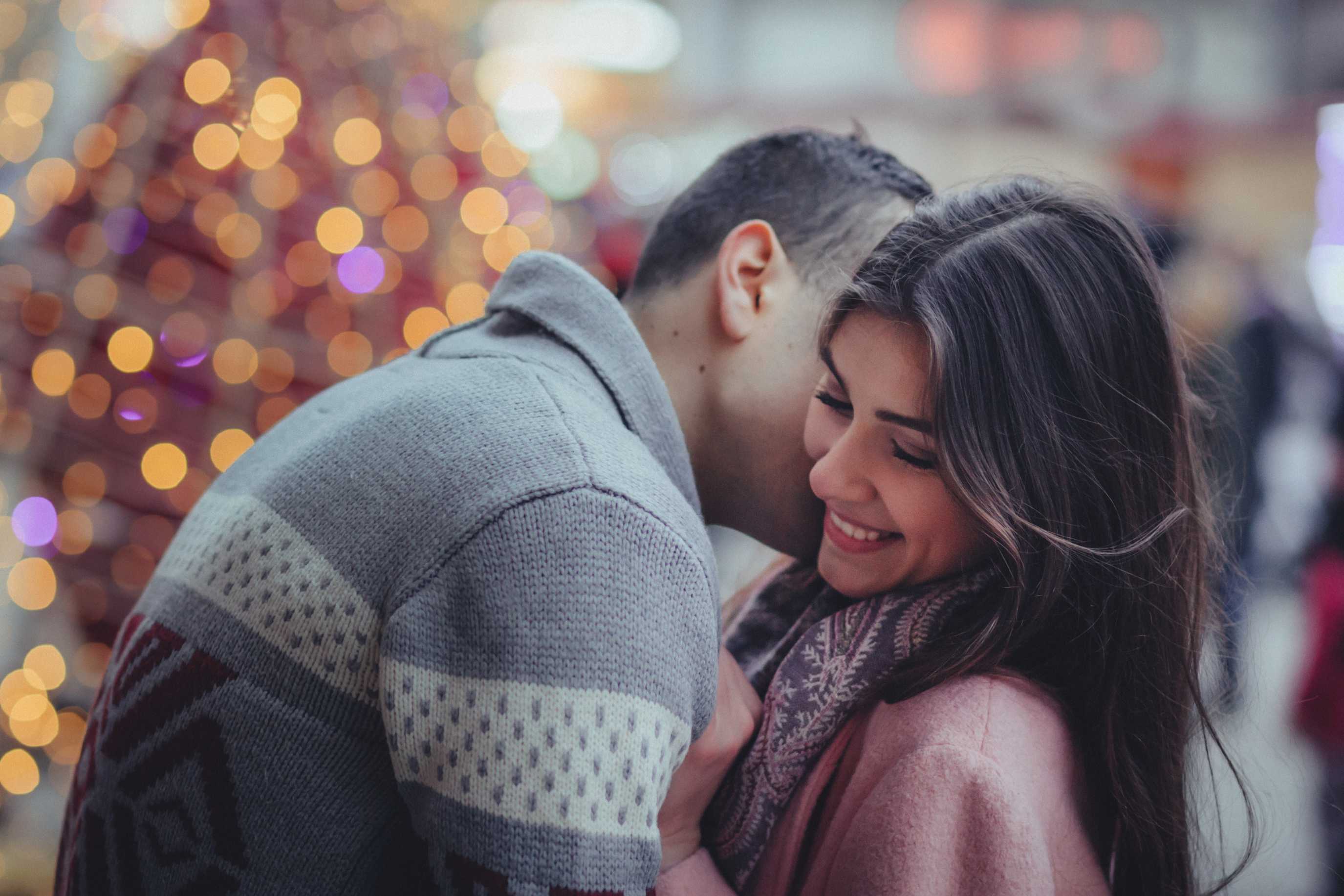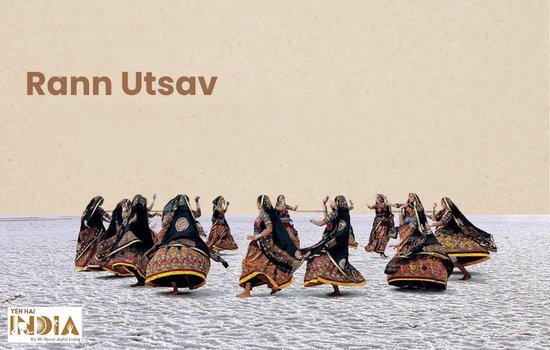Dance is that form of art that lets your soul sparkle through the steps that reveal spiritual themes of life and essence of scriptures. Hundreds of dance forms exist in the world, but only a few can fend for peace of mind and soul. One such form is Kathak, it is an Indian classical dance form that expresses a story through foot movements and facial expressions.
Their origin traces back to the bards of ancient north Indians who were known as ‘Kathakars’ or storytellers. The word ‘Kathak’ was found in the Vedic term ‘Katha’ which means ‘Story’. Kathak dancers are connected by bells and they strung tight together and follow a progression in tempo from slow to fast, ending with a dramatic climax.
There are several forms that fall under Kathak, a short dance composition is known as ‘Tukra’ while a longer one is known as ‘Atoda’. There are also compositions that only consists of foot movements.
Recommended Story – Top Indian Classical Dancers of all times
HISTORY OF KATHAK
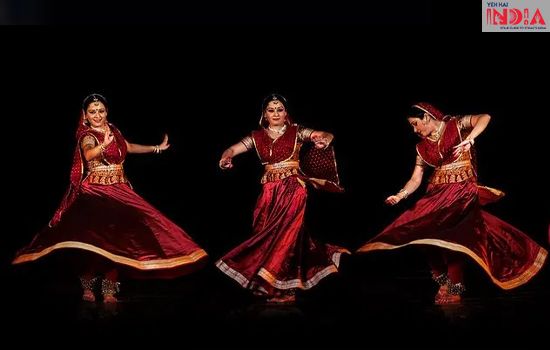
It was being said that wandering Kathakars communicated stories of ancient mythologies and epics through dance. The facial expressions are the key to communicate a whole story. Kathak evolved from being particularly focussing towards childhood and stories of the Hindu god Krishna. Kathak encompasses both Hindu and Muslim ‘Gharanas’ and cultural attributes. Several Kathak performances comprise of Urdu ghazals and preferably use instruments that were consumed during Muslim rule.
Kathak is formed in three different forms called ‘Gharanas’ that are named after the cities from where the dance form evolved that was Jaipur, Banaras, Lucknow. It has been observed that the Jaipur Gharana mostly focusses on foot movements while the Banaras and Lucknow Gharanas focus more on facial expressions.
The ‘Tukras’ that were composed to sight different aspects of the dance form, a popular one at that is ‘Chakkarwala Tukra’ that composes of showcasing spins of Kathak. The spins exhibit at the end of Tukras and are often in large numbers, these are extremely popular among the vigilant audience due to their beautiful visuals that it presents executed at a great speed.
With the spread of British colonial rule in the 19th century, Kathak and other Indian classical forms were heavily declined and were made fun of. With the end of colonial rule, India witnessed a revival of Kathak along with the revival of cultural reclamation and rediscovering history.
Compositions of Kathak
The different compositions of Kathak proceeded with the following order:
Vandana
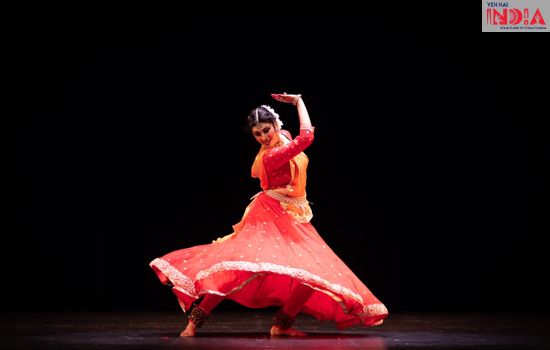
Vandana was the initial prayer that showcases the invocation to the divinity, it’s a short dance item that is performed as prayer. Before the Mughal era, the dance form was performed in temples as devotees of God. Hence since those times, the Vandana was an extremely important part of the performance. Nowadays, the performances mostly have Vishnu or Ganesh Vandana which showcases innovation to the particular God. The invocation also pays respects to their ‘Gurus’ and the musicians on stage. The performer if Hindu combines facial expressions and hand gestures to invoke Hindu gods, while a Muslim performance invocates through ‘Salami’.
Thaat
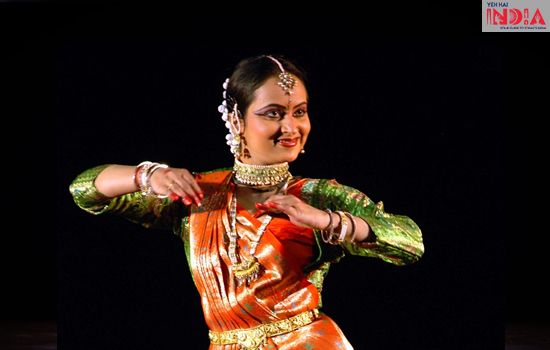
It is the first composition of the traditional dance performance ad it exhibits the style of standing. It involves slow and graceful movements of wrists, neck, and eyebrows. Thereafter the dancer gradually increases the speed and their energy exhibiting faster foot movements. It is also the finishing movement of the performance after completing a sequence of ‘Bol’. Each bol consists of short sections that the dancer follows to exhibit faster movements with every proceeding Bol.
In between these two, the whole performance gradually proceeds with other compositions with greater speeds and faster movements of foot and face. After each Bol, the dancer gets engaged with faster movements of the foot and facial expressions. The Bols represent mnemonics on tabla for example ‘dha’, ‘ge’, ‘na’, etc. the Bols can also be categorised as a dance variety for example ‘ta’, ‘thei’, ‘tat’, ‘tigda’, etc.
Recommended Story – Indian Classical Music- A Sneak Peak
The north Indian dance form ‘Kathak’ differs from Bharatnatyam in several ways. Both of them originating from the Hindu Text ‘Natya Shastra’, Kathak expressions that present Hindu devotional style are more introverted and withdrawn while Bharatnatyam is more extroverted and expansive. Kathak is usually performed in a standing position with legs and torso straight while Bharatnatyam features positions with bent knee form known as ‘Ara Mandi’.
INSTRUMENTS OF KATHAK
The instruments that dancers go with varies from dancer to dancer ranging from two to twelve classical Indian musical instruments. The most common ones are
Tabla
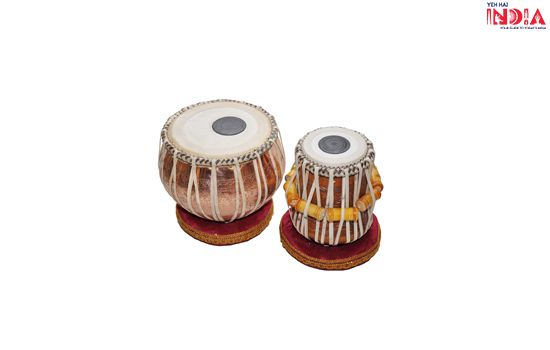
Harmonium

Manjira
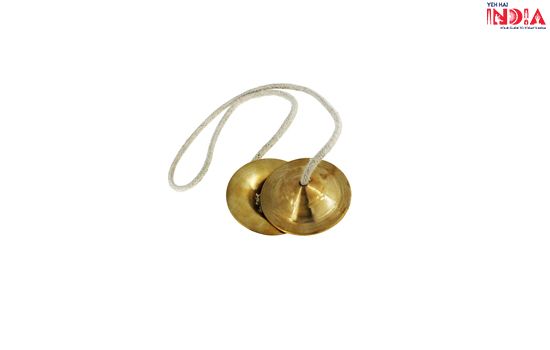
Recommended Story – Top 11 Famous Indian Musical Instruments Names with Pictures
COSTUMES OF KATHAK
The costumes of the dancers vary depending on their religion or the one they want to follow, either Hindu or Muslim. The Hindu costume for female dancers ahs two variations. One is based on a Sari but worn differently where the ‘Pallu’ lands on the left shoulder. ‘Choli’ covers the upper body. The jewellery consists of covering hair, face, ear, neck, etc mostly with gold, a tika or bindi is common.
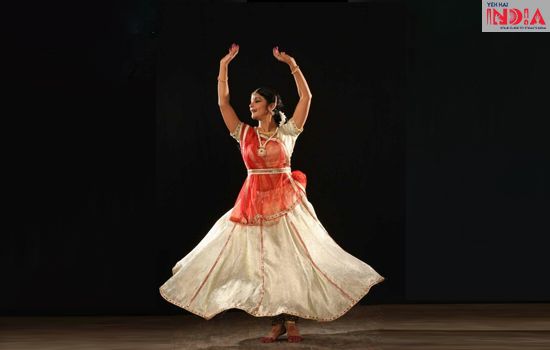
The second type is where they use a long, above the ankle, lightweight skirt with the embroidered border that highlights the different dance movements and expands when the leg expands presenting a beautiful visual. It is paired with a Choli of different colour and a scarf draped over the Choli and head. Jewellery is mostly worn with the second type.

The Muslim costume for female dancers includes a skirt along with close-fitting Churidar Pajamas along with a long coat covering the hands and the upper body. The head is covered with a scarf with some light jewellery.

The Hindu costume for male dancers is Silk Dhoti draped around the waist and a silk scarf tied on top. The upper body is bare with a Hindu thread or a loose jacket, they also wear jewellery with stones.

Kathak as a performance art has survived as an oral tradition. It got innovated and taught from one generation to other verbally and through extensive practice. It integrated the tastes of Mughal courts in the 16th and 17th century particularly Akbar. After that, it started to decline with the British rule and then was reborn as Indian gained Independence as the revival of the Indian culture and with the sense of national identity through these performance arts.


